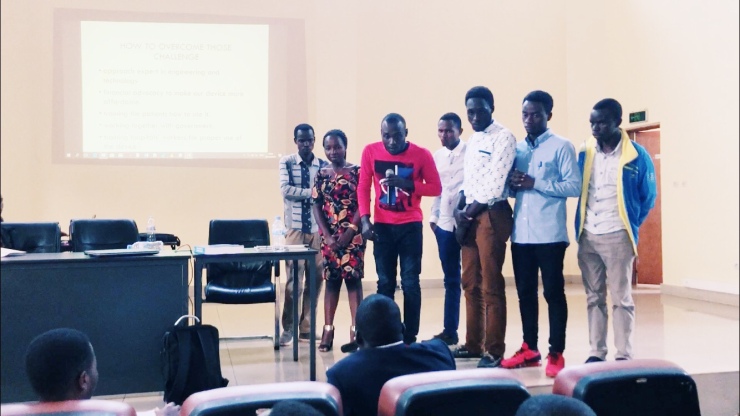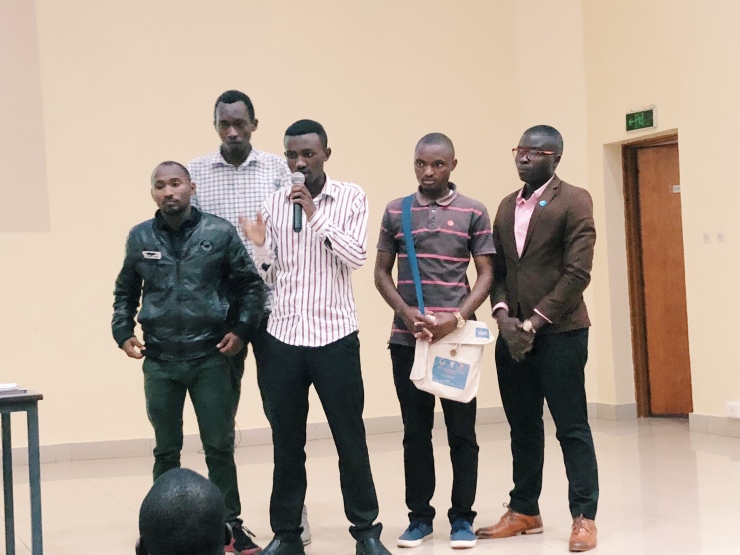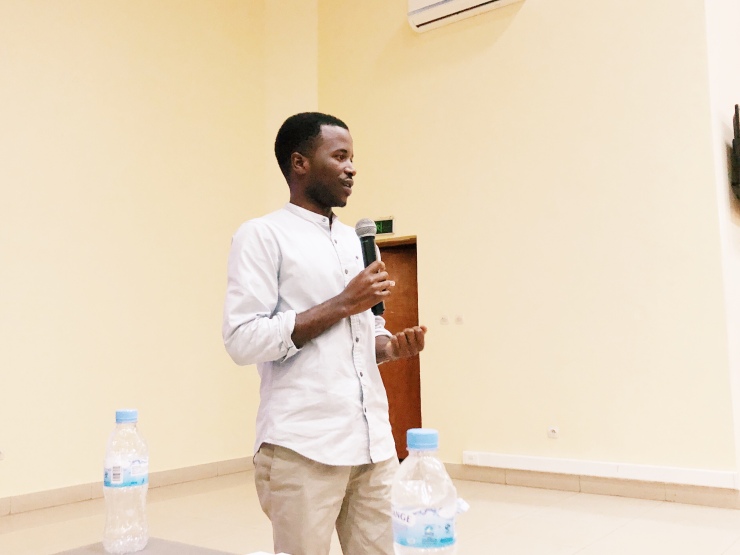Prizes
1st prize
- Team 8: Emergency reporting and referral network
2nd prize
- Team 6: Hexadrain
3rd prize (joint)
- Team 11: National trauma referral system
- Team 7: Head and neck screening protocol
Solutions
Team 1: Artificial body support device (ABSD)
Remote patient monitoring and analytics platform which tracks individual patient baselines whilst also assisting with patient rehabilitation after poor neurological outcomes following surgery.

Team 2: Biomedical equipment system for troubleshooting (BEST)
4-part solution, titled “MCQs”: Maintenance and repair, Capacity building – referring to training manpower and introducing Biomed EquiApp, Quality control, and a Quick diagnostic system.

Team 3: Surgery care delivery system
The Healthcare Innovators addressed the problem of healthcare service delivery for surgical cases using an electronic platform for communication between the surgeon and hospital.

Team 4: Team advocate, community surgery screening tool
Infrastructure for community-health worker training and data collection on surgical conditions in the community for rapid referral to health centers and hospitals.
Team 5: Campaign against Surgical Site Infections (SSI)
Surgical site infection health policy pitch involving a three-step health reform through the development of recommendations to be carried out by hospital staff in addition to CHWs in the community.

[Slides – missing]
Team 6: Hexadrain
Two part solution: Part 1 – advocacy, awareness, and training programs. Part 2 – a innovative tool, the “hexadrain”. Tool components include: a diagnostic sensor using infra-red, drilling and cutting components, aspirator and graduated contained, ICP monitor screen, and real-time information tool.

Team 7: Head and neck screening protocol
Head and neck screening protocol for health and neck cancer in the community, to be performed by the patient under the instruction of healthcare worker.

[Slides – missing]
Team 8: Emergency reporting and referral network
Reporting system and referral network as part of managing emergencies at the district hospital, platform with app to help alert specialists at referral hospital to help with emergency cases across the network.

Team 9: “Lovin” disinfectant for SSI following C-section
Sterilization tool to prevent infections after cesarean section, and C-S InfeControl app: education training platform for healthcare providers, community health workers, and patients.

Team 10: SLEHT, solar-based light emitting head torch
Product to address Rwanda’s power outages during surgery. SLEHT is cheap, portable, safe, sterile and readily available, made from thermosetting plastic, elastic head band, medium intensity LED light, solar panel, and materials include a presence sensor switch.

Team 11: National trauma referral system
Reduction of mortality rate for trauma cases in rural-urban Rwanda using a 2-way data entry software system, mobile app and Trauma intensive care unit framework.

Judges
Gilbert Rukundo, MSc Biostatistics, PhD focusing on using Machine Learning for surgical site infection (SSI) diagnosis in low-resource settings. Current working as a Senior Data Analyst at Partners in Health, Rwanda. Several student pitches were focused on solutions for SSI. Mr Rukundo’s expertise was invaluable and led to lively discussion during the 2-minute Question & Answer session after each team’s 3-minute final presentation pitch.

Edison Nihiwagu, BSc Applied Statistics, MSc Data Science, currently working as a Research and Evaluation coordinator at Save the Children, Rwanda. Mr Nihiwagu provided a unique insights incorporating pertinent perspectives and providing thoughtful advice from his data-focused background. His final presentation encouraged and motivated students to pursue their ideas and continue to iterate and develop their prototypes after the hackathon ended.

Judging Criteria
Participant pitches will be judged on five core criteria:
Creativity: How unique and inventive is the project’s core concept?
Feasibility: How viable is the plan for executing, scaling, and sustaining the project?
Innovation: How well did the proposed solution reimagine a process or create a product to meet a communication need?
Potential impact: Will this proposed communication solution have a large potential impact?
Dissemination: How defined is the plan to broadly disseminate the proposed solution? How likely is that plan to succeed?
